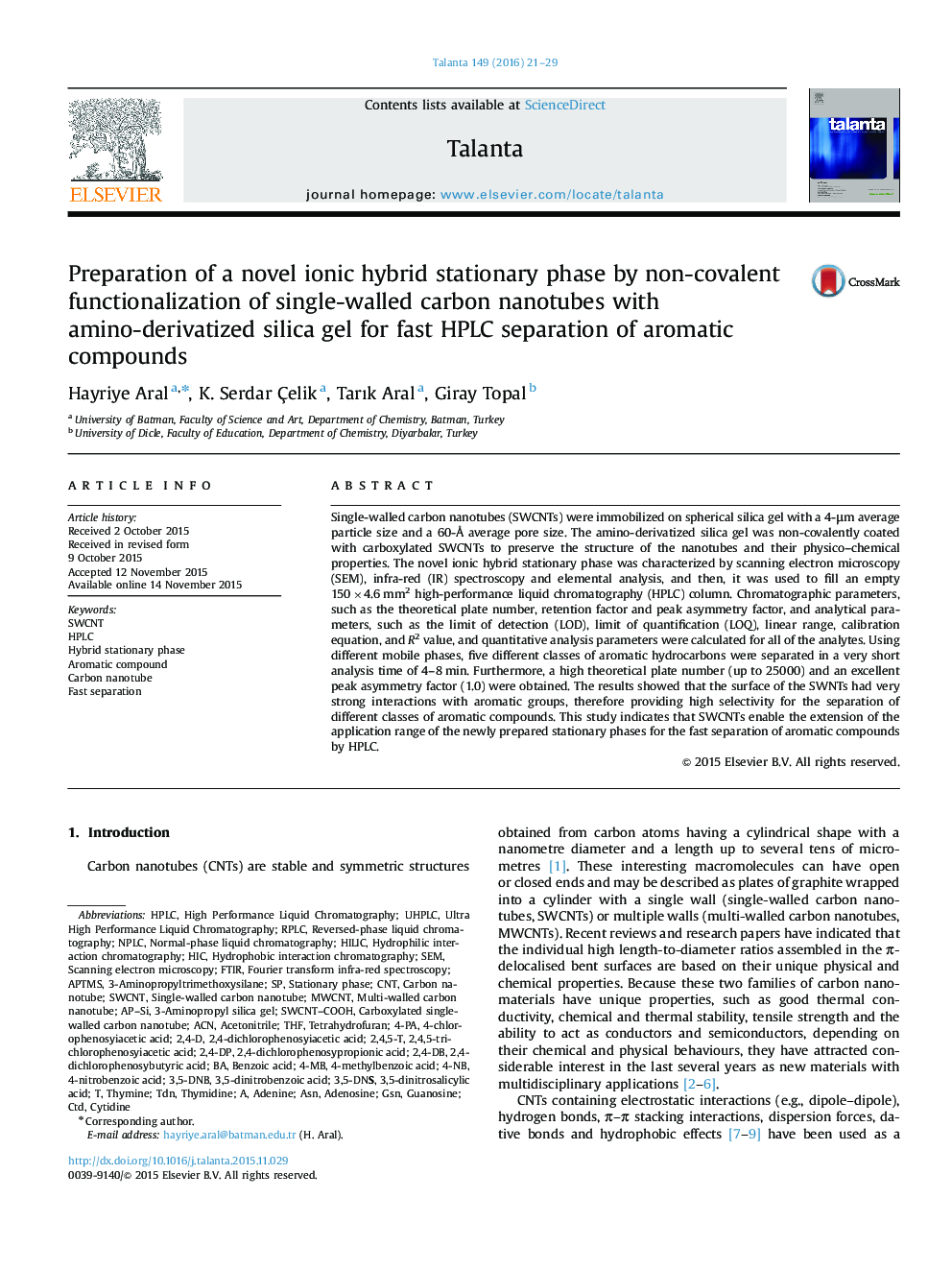| کد مقاله | کد نشریه | سال انتشار | مقاله انگلیسی | نسخه تمام متن |
|---|---|---|---|---|
| 1241801 | 1495786 | 2016 | 9 صفحه PDF | دانلود رایگان |

• A New SWCNT–silica ionic hybrid stationary phase was developed.
• Different groups of aromatic compounds were separated very fast in HPLC.
• Chromatographic parameters were calculated for the new hybrid stationary phase.
• Up to 25000 theoretical plate number (N) was obtained.
Single-walled carbon nanotubes (SWCNTs) were immobilized on spherical silica gel with a 4-μm average particle size and a 60-Å average pore size. The amino-derivatized silica gel was non-covalently coated with carboxylated SWCNTs to preserve the structure of the nanotubes and their physico–chemical properties. The novel ionic hybrid stationary phase was characterized by scanning electron microscopy (SEM), infra-red (IR) spectroscopy and elemental analysis, and then, it was used to fill an empty 150×4.6 mm2 high-performance liquid chromatography (HPLC) column. Chromatographic parameters, such as the theoretical plate number, retention factor and peak asymmetry factor, and analytical parameters, such as the limit of detection (LOD), limit of quantification (LOQ), linear range, calibration equation, and R2 value, and quantitative analysis parameters were calculated for all of the analytes. Using different mobile phases, five different classes of aromatic hydrocarbons were separated in a very short analysis time of 4–8 min. Furthermore, a high theoretical plate number (up to 25000) and an excellent peak asymmetry factor (1.0) were obtained. The results showed that the surface of the SWNTs had very strong interactions with aromatic groups, therefore providing high selectivity for the separation of different classes of aromatic compounds. This study indicates that SWCNTs enable the extension of the application range of the newly prepared stationary phases for the fast separation of aromatic compounds by HPLC.
Figure optionsDownload as PowerPoint slide
Journal: Talanta - Volume 149, 1 March 2016, Pages 21–29